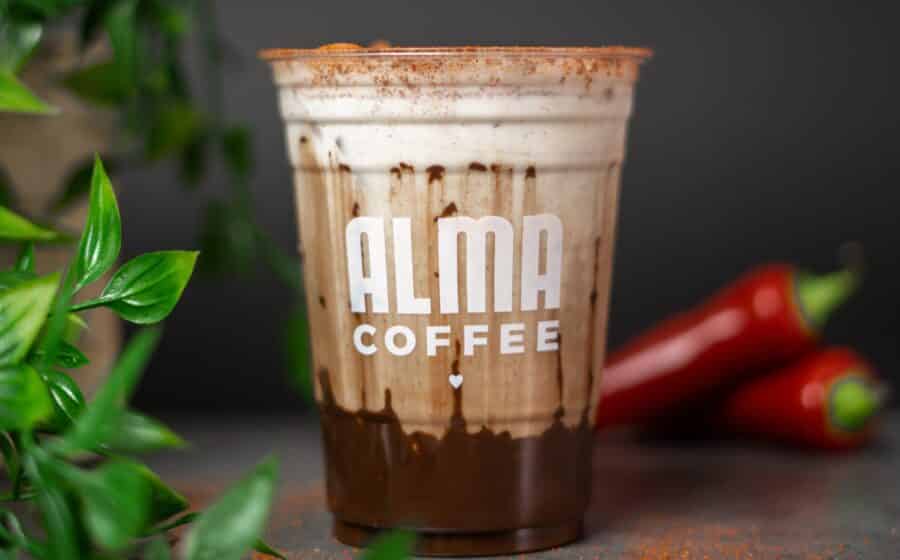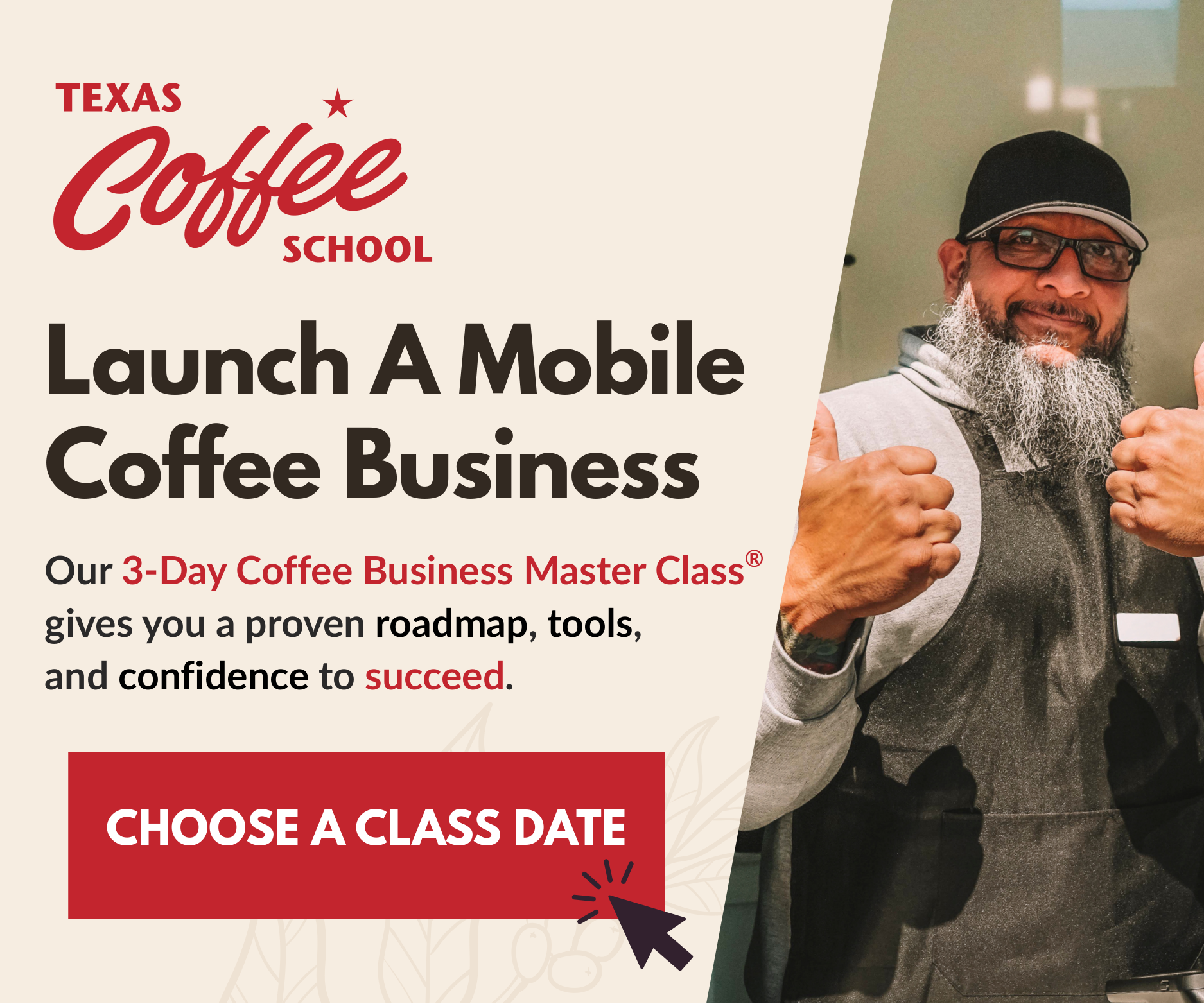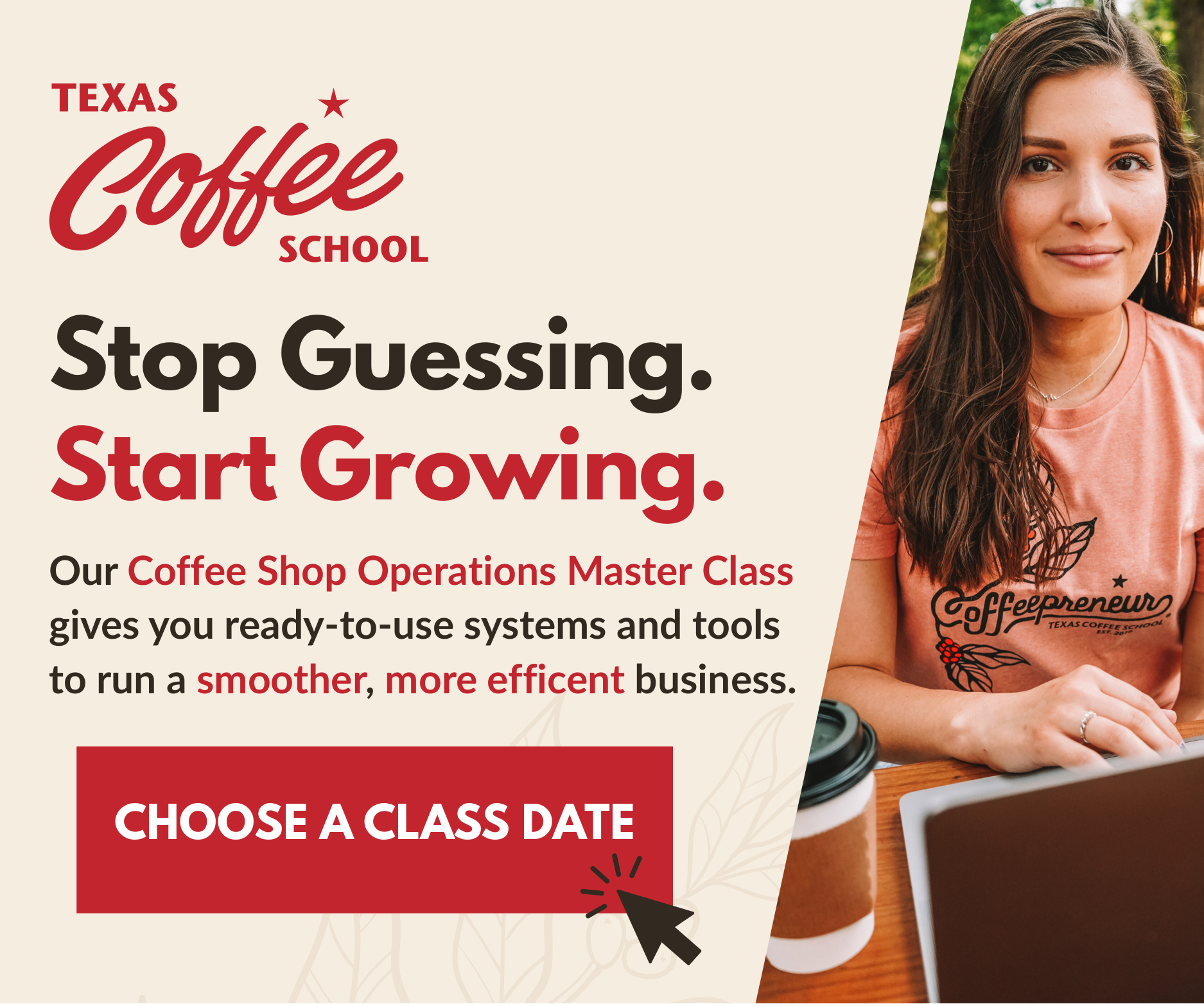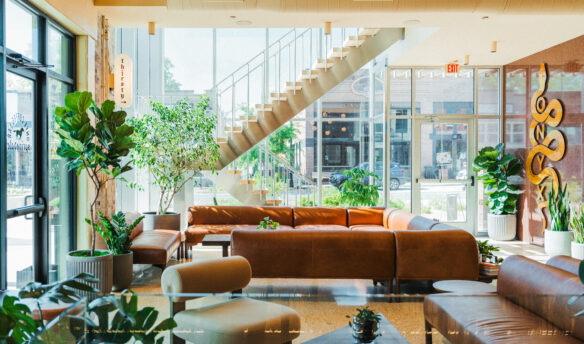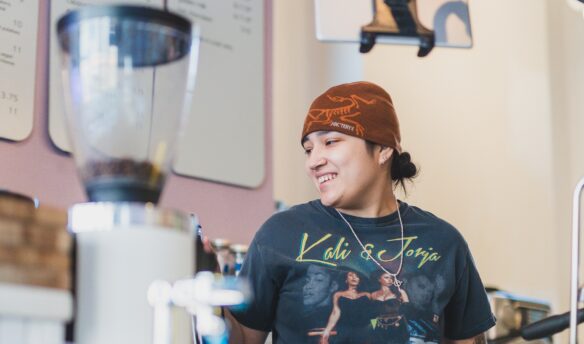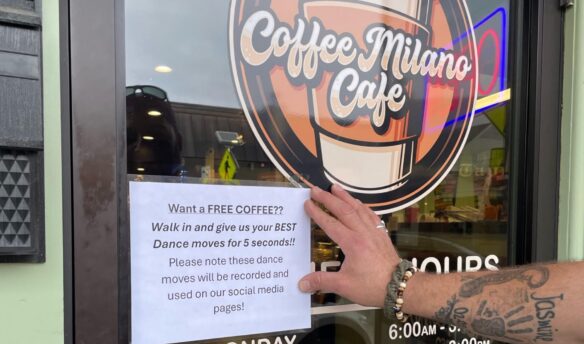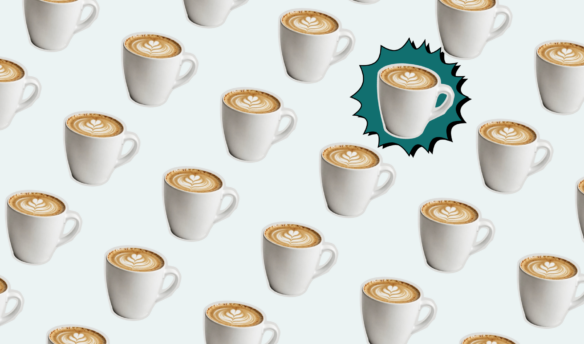This article is sponsored by our partner, Your Brand Cafe.
Coffee shops are experiencing rising costs from all directions, and many are opting for budget-friendly supplies wherever possible. But when comparing up-front costs to later-realized return on investments, the wisest decision on how to make the most of every dollar is not always cut and dry.
Disposable coffee cups are one of these areas. The budget option—white paper cups and brown kraft sleeves—comes at a palatable price (no wonder it is so common), but it’s impossible to ignore the visual impact and allure of the slightly more expensive option: custom-branded cups.
The contrast between generic and custom-branded cups begs the question: are branded cups worth the price? Or rather, when and for whom are branded cups worth the higher cost?
Non-Traditional Advertising for Your Coffee Shop
Marketing and advertising is a line item often left off the budget, both for new and established coffee businesses. It’s easy to assume the quality of your product is enough to bring in customers, but this isn’t always the case. Hubspot reports that the national average marketing budget is around 13%, with coffee shop owners potentially having less money to invest, so how can coffee businesses best allocate their marketing budget to maximize their return on investment (ROI)?
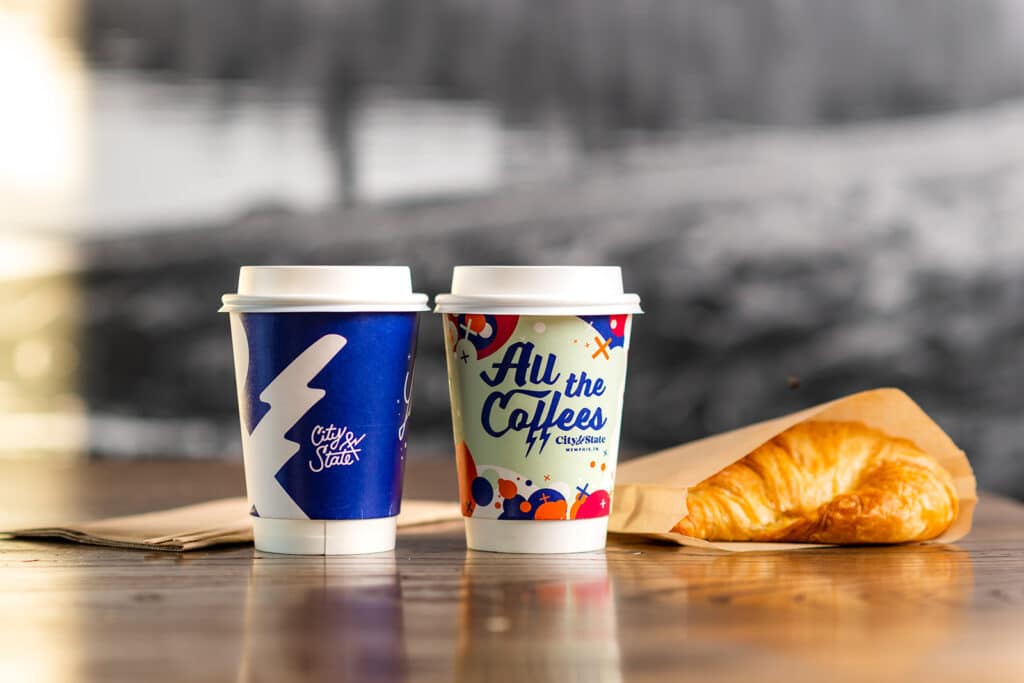
You can run ads on social media platforms like Facebook and Instagram and pay ~$1 per click to boost brand awareness. If you’re looking beyond social media, more traditional marketing, such as print ads in local newspapers or nationally-distributed magazines, can cost between $2,000 and $160,000. Or you can go old school and fork out $200 to $5,000 (or more) per week, on average, for a local television commercial or radio spot. Ad spend can add up very quickly, and while larger chains might have the capital, this expense is often not feasible for smaller independent shops.
Now, imagine a customer leaving your cafe, and they’re holding a drink with your café’s name prominently displayed across the cup. With every sip, they become a walking ad to each person they pass. “They’re not only sharing your brand, but they’re also sharing their experience, and that is walking word-of-mouth advertising,” says Lindsay Rutledge, VP of Administration and Marketing at Your Brand Cafe (YBC). “Not only are you getting that visible exposure, but you’re also getting an ambassador for your brand.”
According to a Nielsen study, 92% of people trust brand recommendations over every form of advertising—even from strangers. Similarly, word-of-mouth marketing was found to be more effective than paid ads, resulting in five times more sales. “On average, people are going to hold on to a cup of coffee for about 45 minutes in the morning,” says Rutledge. “And who do they encounter in those 45 minutes? Maybe it’s somebody who’s never heard of you, but they saw your cup this morning, and now they’re interested.”
Alma Coffee was founded in 2018 by fourth and fifth-generation Honduran coffee farmers and father-daughter duo Al Lopez and Leticia Hutchins, along with Leticia’s husband, Harry. Alma Coffee’s brand is deeply rooted in family, heart, and soul (“Alma” in Spanish), and Hutchins says that YBC branded cups allowed them to proudly communicate this message to customers: “As a startup, establishing who we were and having a beautifully designed cup to highlight our drinks was very important to us.”
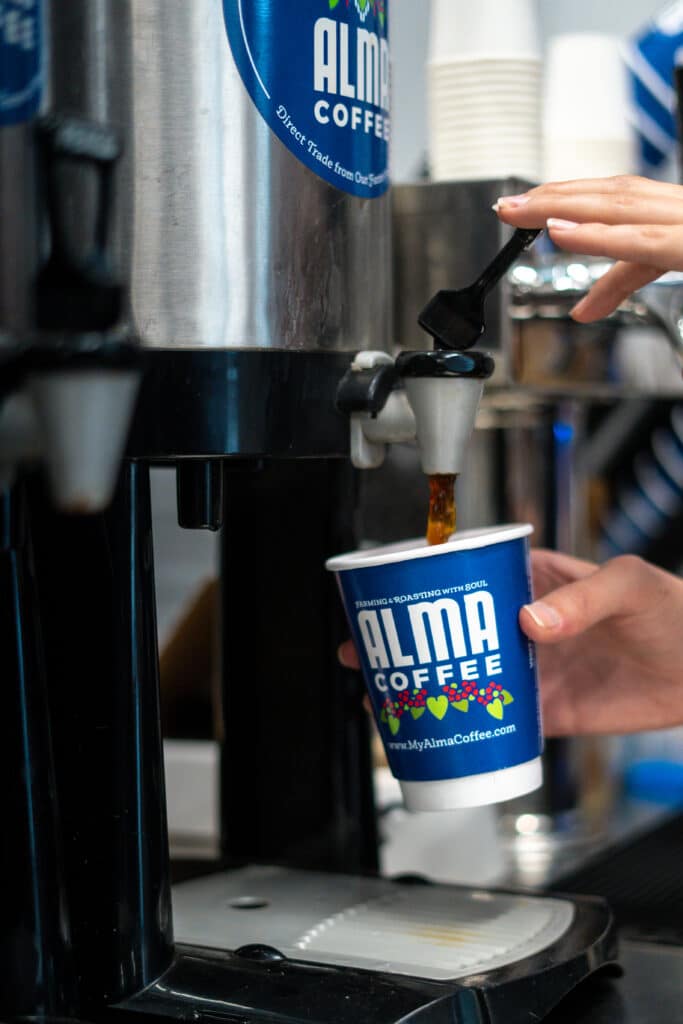
Hutchins adds that branded cups are also a fantastic conversation starter about your brand. “This can trigger conversations with potential customers who have never heard of or seen your brand before. On average, it takes more than ten touch points to convert a potential customer into a customer, so branded cups can be one or some of those touch points.”
For cafes with multiple locations, branded cups serve a dual purpose: they provide cohesive branding across all locations and act as a form of quality control. Despite each shop being its own unique branch, consistent branding reinforces brand identity and delivers a uniform experience, regardless of which location your customers visit.
By using a branded cup, you not only showcase the quality of your product but also communicate the vibe and ambiance of your coffee shop. For instance, if your cup features vibrant and funky decorations compared to something more minimalist or rustic, it gives customers a glimpse of what they can expect when they visit you. Branded cups really offer operators a way to demonstrate pride in their product and shop, saying, “I believe in this product so much, I’m putting my name all over it.”
Cost Crunching: Unbranded Versus Branded
Incorporating more branding into your coffee shop requires some level of investment. But you’ll need to buy cups, sleeves, and lids to operate anyways, so why not make them work for you?
Generic, non-branded cups cost around 8-12 cents per cup from most wholesalers, while suppliers like Your Brand Cafe charge between 20 and 25 cents for branded cups. This may sound like a significant difference at scale, but it’s helpful to put the cost increase into perspective.
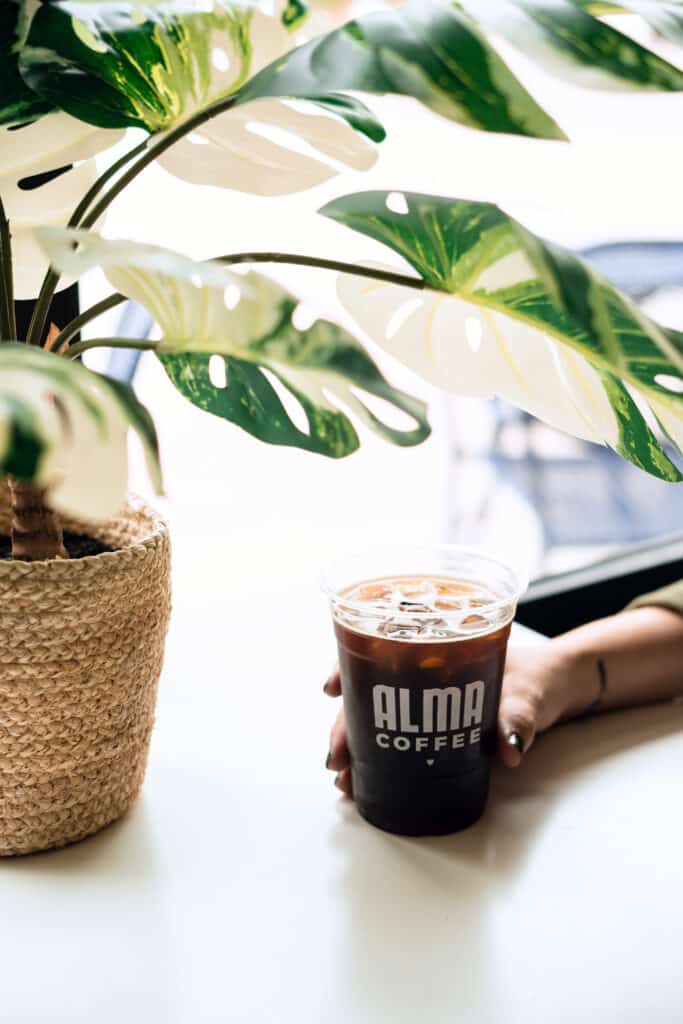
Advertising platform Reveal reports that the average cost per thousand impressions through Facebook advertising in the United States is $11.50 as of July 2023. Instagram ads follow closely at $10.54 per thousand impressions. That comes out to roughly one cent per impression.
Would you rather invest in impressions for one cent each on Facebook or in custom branded cups for an extra 10-15 cents that are more likely to be shared by customers on social media, potentially earning hundreds of impressions? Measuring which route would be more productive for your business is near-impossible: Facebook ads are a relatively sure bet, dollars for impressions, but the implicit personal recommendation of someone carrying a branded cup is more likely to turn non-customers into first-time visitors.
If the cost of custom cups is still unpalatable, the lowest-cost rung on the branded cup ladder is branded sleeves. For less than $200, coffee brands can print a case of branded sleeves and pop them on blank cups. This can be a great way to get your brand on the product without committing to ordering different sizes of branded cups. Custom sleeves aren’t as vibrant and recognizable as branded cups, and if the sleeve comes off at any point, you’ve lost your branding altogether.
Brands can always start with lower-cost cup options like one-color printing or limited print areas. Then, as you grow, you can progress to more extensive branding options, such as full-color or full-wrap digitally-printed premium cups. “Nobody decides not to buy a cup of coffee over ten cents,” says Rutledge.
So, Who’s Ready for That Next Step?
There’s no simple answer when deciding whether or not to invest in branded cups. Businesses in high-traffic areas or facing rising local competition should consider incorporating branded cups into their budget. However, this decision ultimately depends on each business’s unique circumstances. Some family-owned shops that’ve been around for 20-30 years have thrived with minimal branding. Meanwhile, some newer establishments (like Alma Coffee) hit the ground running and invested in branded cups immediately to establish a strong brand presence in the community.
Hutchins urges businesses to make the right decision for their situation. “Will investing in branded cups prevent you from running payroll or something else that is absolutely crucial to the business?” she asks. “If so, consider hand-stamping cups for a while for a middle-of-the-road option.” She adds that while switching to branded cups can be a commitment and an investment, she’d recommend doing it as soon as possible, provided you have the financial ability to do so.
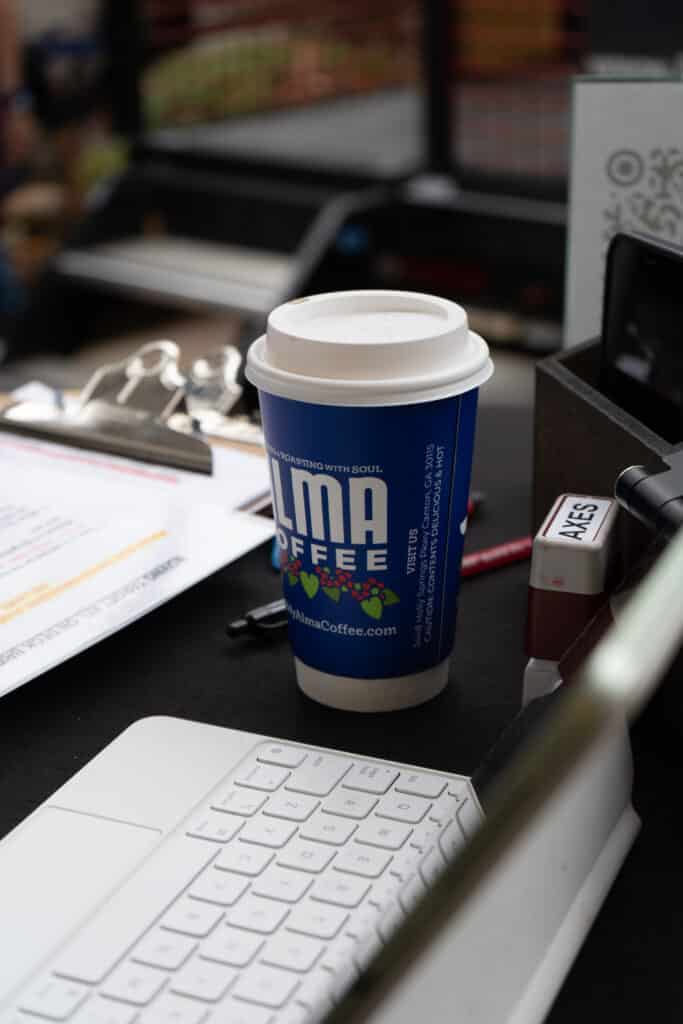
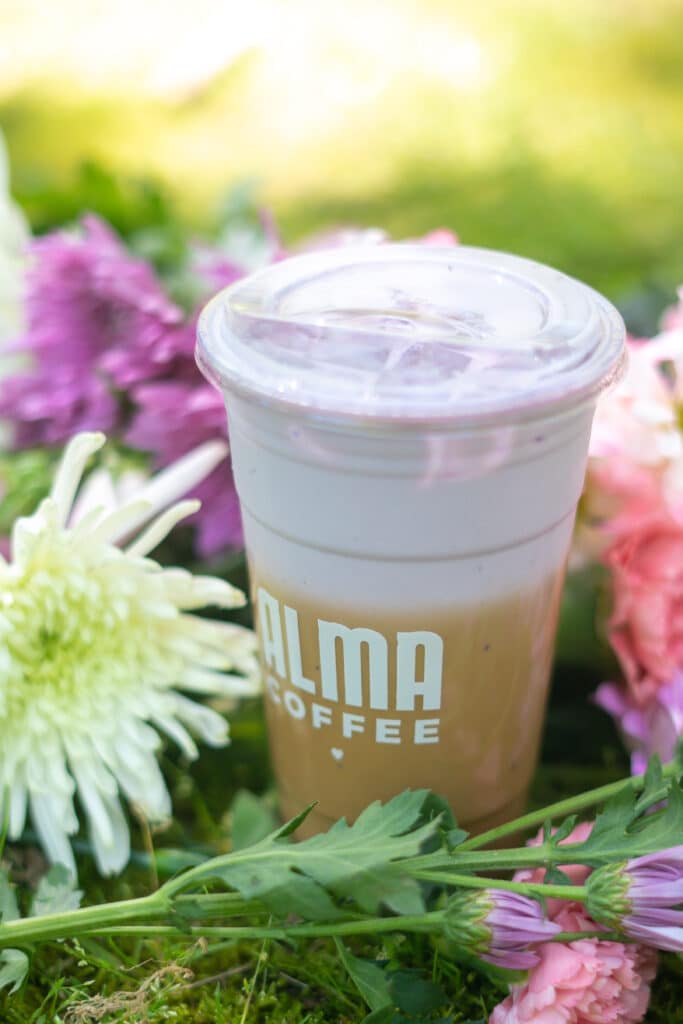
“I think that there is a level of branding that is available to everyone, be it stamping sleeves or going full-blown across-the-board branding,” says Rutledge. “But I think you really have to consider where you are in your journey.” Your Brand Cafe has built-in quantity breaks, allowing everyone (even small shops) to use branded cups. Hutchins recommends using this to your advantage and buying in bulk to keep the costs down but also reminds operators to ensure they have enough space to store everything.
The Trick to Measuring ROI on Brand Marketing
While measuring the exact ROI of your brand marketing can be super tricky, metrics like revenue growth and asking customers about what brought them in can provide some valuable insights. Rutledge suggests using more data-centric approaches, such as printing QR codes on the cups with a trackable link to one of your social platforms or website. “And all of those [links] are so trackable where you can say, okay, where are my cups going? And who’s following through? What kind of information are we getting?”
You can also measure the impact of branded cups by tracking social media growth and user engagement. People love sharing pictures of their coffee cups, so ensuring your name is on that cup can help your brand gain more exposure across social platforms. Tracking the number of people tagging you and comparing your follower count before and after you implemented branded cups are indirect ways to measure the efficacy of your brand marketing.
Your Brand Cafe offers the flexibility to run small volumes to help its customers keep their branded cup designs fresh and exciting. Rutledge says that some of their customers use small-volume print runs as an opportunity to promote upcoming events and special happenings, such as open mic nights, by printing the event schedule on their cups. Or some shops garner more social interest by hosting community cup-designing contests or bringing in a local artist to design a special cup.
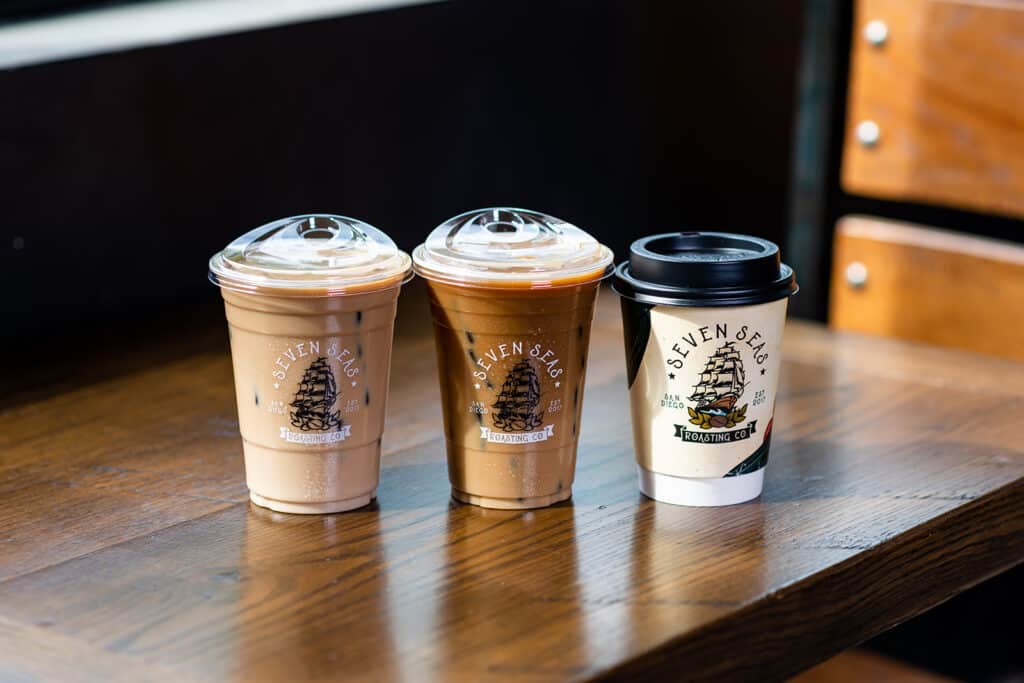
Not to mention printed cups allow brands to feature seasonal designs—Rutledge says they release stock designs for different holidays and seasons, where your cup still features your brand’s design assets but with celebratory and holiday-specific elements. It’s a huge deal when Starbucks comes out with its winter cups, and YBC gives smaller businesses a chance to lean into this seasonal excitement. By incorporating various artistic designs and seasonal themes, operators can add a refreshing twist to their standard cups while keeping customers engaged and excited for what lies ahead.
So, are branded cups worth the cost? To Rutledge, the answer is clear: “If people in your town start to recognize your brand and recognize where the people around them have been, then that brand recognition is almost unparalleled.”
Photos featuring Alma Coffee courtesy of Alma Coffee. Other photos curtesy of Your Brand Cafe.



